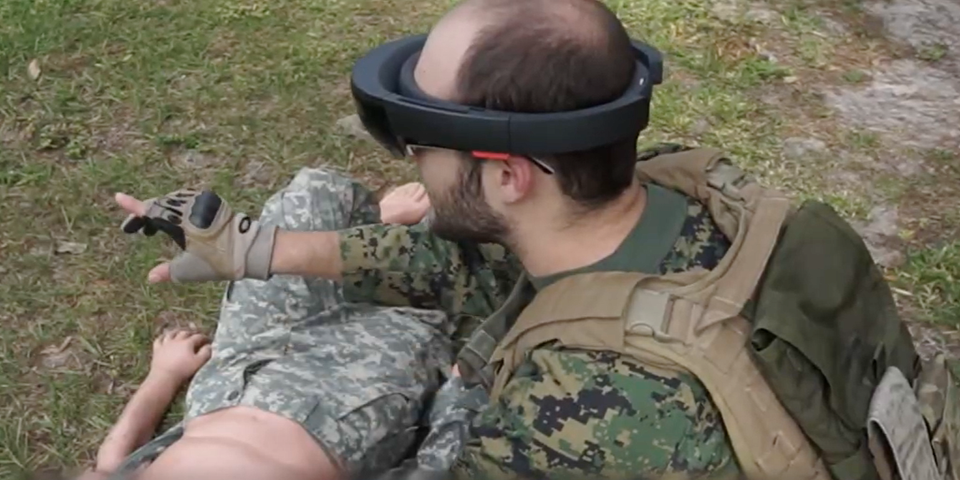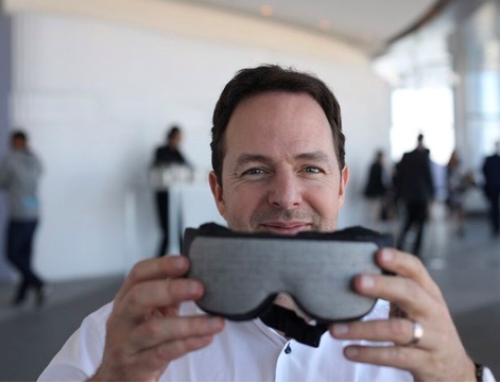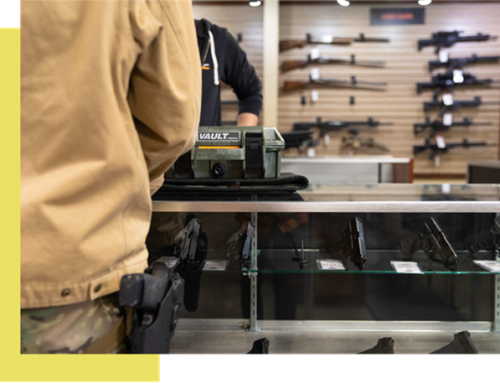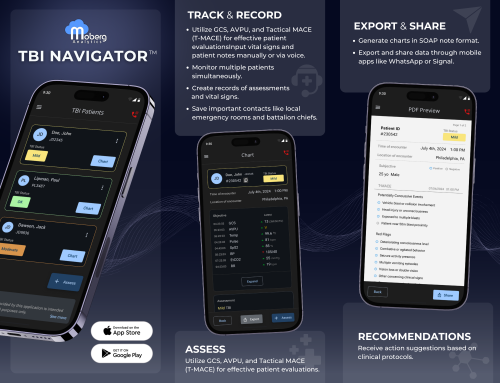Design Interactive is developing their Dual-Adaptation Protocol for Augmented Reality (DAPAR) for augmented reality (AR) training in military medical training. The DAPAR effort seeks to determine 1) if AR has important negative effects on human physiology and if this negatively impacts training and post exposure safety, and 2) develop AR usage protocols, design guidelines, usability criteria, and best practices to ensure AR is safe and effective to use in military medical training. A total of 180 subjects participated in this study. This effort was supported by the U.S. Army Medical Research and Materiel Command (USAMRMC) Joint Program Committee-1 (JPC1)/Medical Simulation and Information Sciences Research Program (MSISRP), and funded through MTEC’s Request for Project Proposals for assessing the psychological and physiological efforts of AR (Solicitation #18-09-APPEAR).
Augmented reality (AR) is rapidly being adopted by industry leaders and militaries around the globe. For example, the United States is planning to field the Integrated Visual Augmentation System (IVAS), a Microsoft HoloLens-based AR technology that will serve as “fighting and training goggles”. IVAS can help Soldiers visualize the battlefield, support mission rehearsal, train new skills, refresh existing skills, and more. With this rapid adoption of AR technology, it is crucial to have a standardized, scientifically-based paradigm on which AR training and operational support tools are designed and used. One area of particular concern is the potential for physiological maladaptation following prolonged AR exposure. Examples of maladaption include cybersickness, shifts in visual function, reduced hand-eye coordination (dysmetria), postural instability (ataxia), and malaise.
Therefore, Design Interactive conducted a study to evaluate physiological effects from two AR Head-Worn Displays and an AR Tablet. Specifically, the DAPAR study examined the physiological impact of AR medical training simulations during and after different exposure protocols and with different AR displays. Key metrics were habituation, which is defined as the diminished sensitization to cybersickness, and dual-adaptation, which is an ideal scenario that would allow a Soldier to seamlessly transition between an AR headset and the real operational environment without any adverse physiological impact.
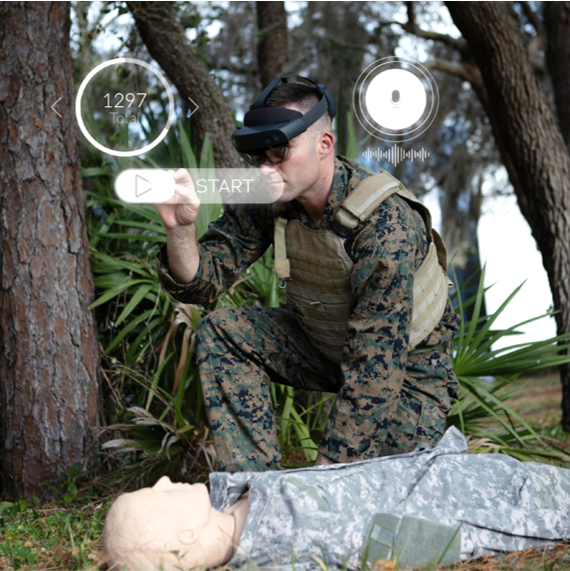
An example of a subject performing a Tactical Combat Casualty Care (TCCC) AR training scenario. Prolonged AR exposure can lead to negative physiological effects such as cybersickness, ataxia, visual fatigue, and reduced hand-eye coordination. Design Interactive recommends that Soldiers should limit fine motor activities for 1-2 hours following an AR-based training scenario to allow time to readapt to the real-world.
In the DAPAR study, subjects underwent 2 hours of Tactical Combat Casualty Care (TCCC) AR training scenarios under different exposure protocols (i.e., protracted, 6-20 or 3-40 minute exposures with 30 minute breaks). After the 2-hour training period, physiological effects were measured. Subjects displayed slowed eye movement (i.e., sacaddic slowing), reduced vestibulo-ocular reflex, ataxia, and degraded hand-eye coordination, with compromised functioning persisting for 1+ hours post AR exposure. Therefore, none of the exposure protocols led to dual-adaptation; though the protracted 2 hour protocol did lead to habituation, while the exposure protocols with breaks did not. In other words, seamless physiological transition between AR and the real-world was not achieved but reduced cybersickness was achieved, however, only with protracted AR exposure without breaks. The results suggest that Soldiers will not experience high levels of stomach upset or mailaise with protracted AR exposure, as is typical with virtual reality (VR) exposure. Thus, the relatively high dropout rates associated with VR exposure (20+%) are not anticipated to be associated with long duration AR exposure. The lack of dual-adpation and associated adverse aftereffects suggest that during AR habituation, sensory systems may begin to favor vestibular/proprioceptive cues over visual cues within the AR headset. This sensory reweighting appears to lead to persistent shifts in sensorimotor functioning post AR exposure. Thus, it is expected that Soldiers who undergo long duration (2hr+) AR exposure will experience a reduction in sensorimotor performance for a considerable amount of time, which could have a profound effect on Force readiness.
The study demonstrates that AR habituation affects an individual’s sensorimotor abilities, with disruption of vision, balance, and hand-eye coordination that persists long after AR exposure ceases. This suggests a decompression period may be needed post AR exposure, during which normal sensorimotor abilities can be regained. Additionally, Design Interactive recommends that AR developers match simulated distance in the AR display and focal distance as closely as possible to minimize Soldier discomfort and minimize perceptual distortions. Further study is needed to determine how to promote both habituation and dual-adaptation during AR exposure so that Soldiers can seamlessly transition between the IVAS headset and real-world without negative physiological consequences. Such an understanding is critically important to optimizing the safety and effectiveness of AR technology.
About Design Interactive:
Design Interactive Inc. is a woman-owned small business that creates easy-to-use adaptive training and enterprise software solutions, specializing in augmented, mixed and virtual reality for medical, industrial and military clients using proprietary models of human behavior and physiology to personalize the user experience.
